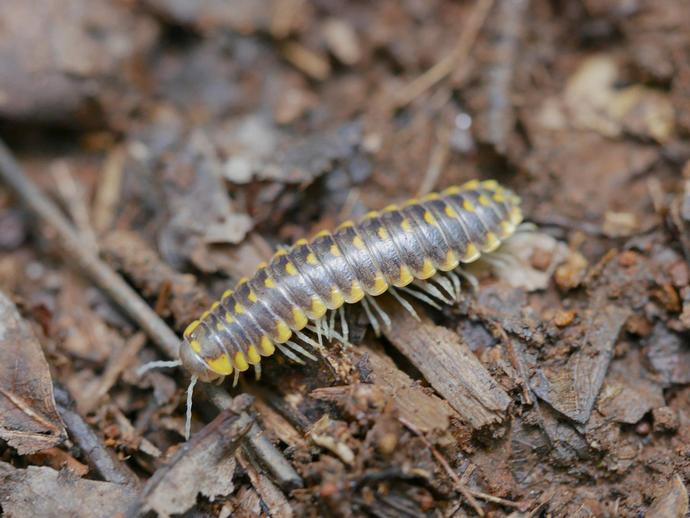October 13, 2020
Ben here with another #BenInNature update! This is Apheloria virginiensis, and it's one of the most widespread millipedes in the eastern U.S. Dr. Jackson Means, who is a Collections Assistant at VMNH and an expert on millipedes, filled me in on some interesting facts about this little guy!
According to Dr. Means, this species can be found from northern New York all the way down to northern North Carolina, which is a very wide range for a millipede; they're usually restricted to fairly small areas. Despite that, there is still a lot to learn about this species.
Millipedes are scavengers that eat decaying leaves and plant material, and you don't have to worry about getting bitten by one. However, they aren't defenseless. Apheloria virginiensis millipedes produce cyanide as a chemical defense, and believe it or not, one of these millipedes carries enough cyanide to kill 18 pigeons!
However, the purpose of the cyanide isn't to kill predators; it's supposed to teach them a lesson. While it's not entirely clear what animals are the main predators of millipedes, according to Dr. Means, it's likely that wild turkey and grouse are major predators given that they hunt for food by scraping away leaf litter, which is exactly where millipedes like to live. These birds are also visual predators, meaning that the vivid yellow-and-black coloration of these millipedes would serve as a warning (this coloration is known as "aposematism," which is how some animals advertise to predators that they're not worth attacking or eating). Finally, turkey and grouse are large enough birds that eating an Apheloria millipede wouldn't kill them, but it would certainly teach them a lesson they would never forget!
If you spot one of these millipedes in the wild, there's no cause for concern. However, if you handle one, be sure to wash your hands afterward, because their chemical defenses can cause irritation if they get in your eyes.
Thank you to Dr. Jackson Means for the identification and information!
ABOUT #BenInNature
Social distancing can be difficult, but it presents a great opportunity to become reacquainted with nature. In this series of posts, Administrator of Science Ben Williams ventures outdoors to record a snapshot of the unique sights that can be found in the natural world. New updates are posted Monday - Friday, with previous posts highlighted on the weekends.
NATURE PHOTO IDENTIFICATIONS
If you discover something in nature that you would like help identifying, be sure to message us right here on Facebook with a picture (please include location and date of picture) and we'll have our experts help you identify it!

 Hours & Admissions
Hours & Admissions Directions
Directions

